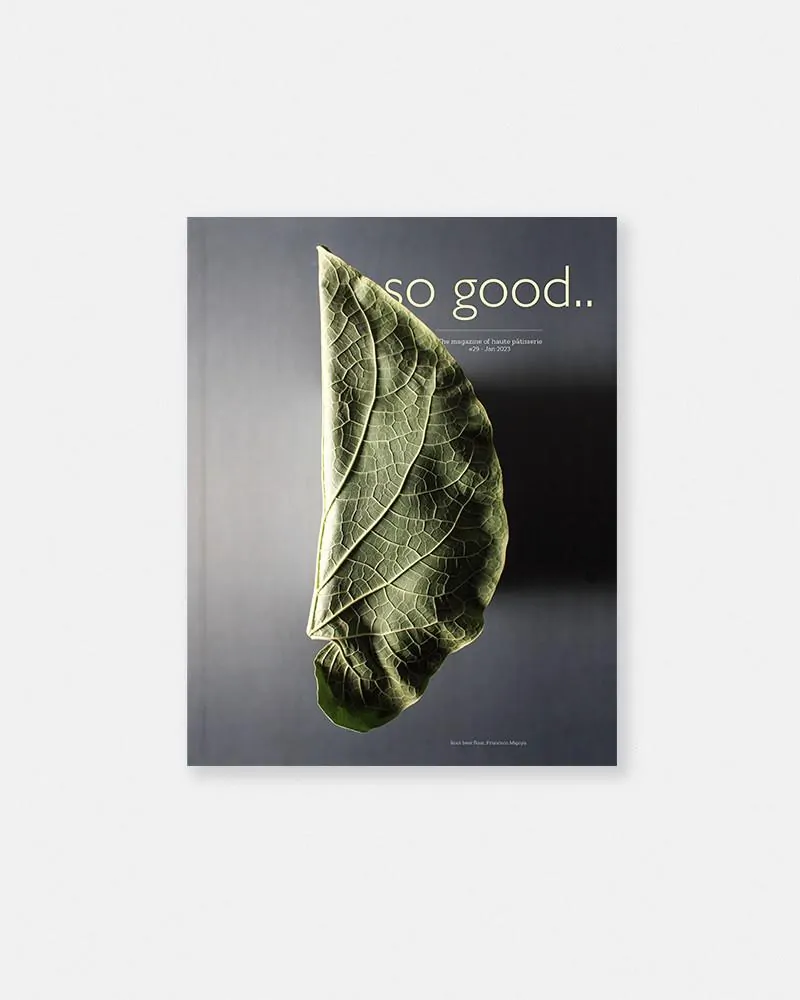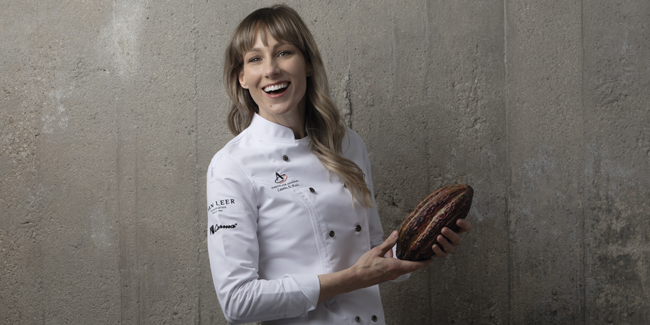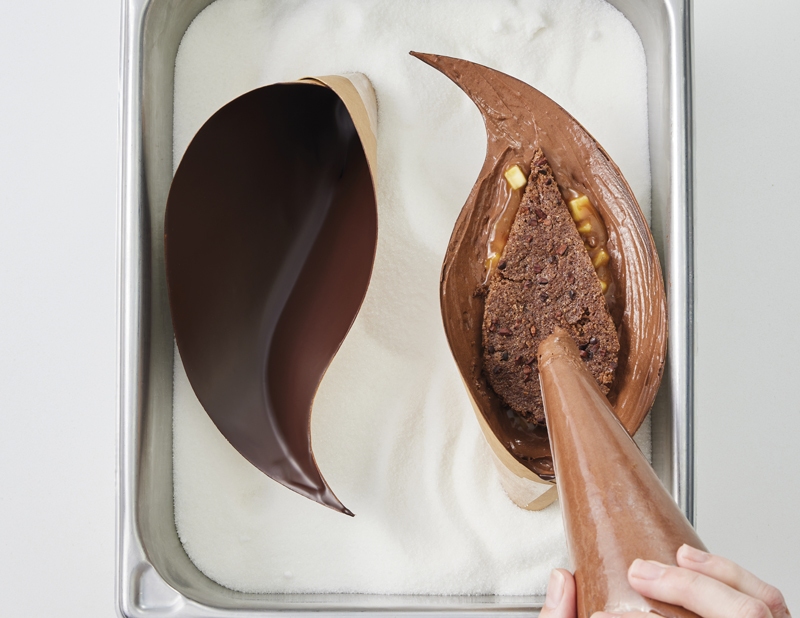Categories Pastry Chef Articles
Lauren V. Haas: ‘Equipping chefs with sustainability competencies will have a long-lasting impact’
She has become a benchmark for pastry in the United States, thanks to a solid teaching career, first as Associate Professor within the International Baking & Pastry Institute at Johnson & Wales University, then as Barry Callebaut’s gourmet Lead Chef for North America and, most recently, as Professor at the Culinary Institute of America in Saint Helena, California. From the educational sphere, Lauren V. Haas has been able to deploy her personal style, her overflowing creativity, her leadership skills and, in a very special way, her sensitivity towards nature as a source of inspiration and resources and as a supreme good to be preserved. This interest in sustainability led her to pursue a master’s degree in Sustainable Food Systems from Green Mountain College.
And it was this concern for the environment that led her to propose to so good.. magazine 29 the publication of this thematic block, with the participation of several chefs, to raise awareness of something that concerns us all. Haas proposes to act in several directions, relying on local producers to obtain ingredients, reducing waste production, eliminating disposable plastics and opting for compostable materials, or optimizing energy consumption. However, ‘sustainability isn’t all or nothing; it’s incremental…,’ she points out. ‘The general theme is creating pastry in harmony with itself and with nature,’ she concludes.
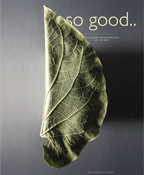
How could we explain what sustainability consists of in the world of gastronomy in general and in patisserie in particular?
While discussions around sustainability in gastronomy often center on sustainable ingredients, sustainability encompasses a broad range of social, economic and environmental factors. As chefs, we need to take a wide lens, considering not just ingredients, but how the processes and materials we use impact the planet and the people who are involved along the way.
In patisserie, we typically transform ingredients such as flour, butter, salt, sugar and chocolate into works of edible art. Because of this reliance on foundational ingredients with an emphasis on commodities, the supply chains for our products are often long and convoluted, increasing the complexity of efforts to source sustainably.
Why is it necessary for pastry chefs to become aware of practicing sustainable pastry?
As chefs, we have the opportunity (and I would argue, responsibility) to practice sustainability in a unique way. Our visibility can raise awareness of sustainability issues and solutions, increasing consumer demand for sustainable foods and products. Over time, this can positively influence food economies and ultimately the future of our planet.
Eliminating the use of all vanilla, chocolate, and other core ingredients would devastate communities that rely on these agricultural products. The answer is to support sustainable sources for such ingredients.
How can sustainable pastry be practiced? Can you give some examples of practices that you have incorporated into your daily work?
I typically think about three main categories for sustainability: ingredients, waste / material use, and energy. As chefs who care about sustainability, ingredients are one of the most significant aspects under our influence. An obvious choice is supporting local growers and producers. For example, sourcing local fruits, dairy, and grains supports local food economies and reduces the consumption of fossil fuels.
However, there are a number of core pastry ingredients which cannot be sourced locally in much of the world. Depending on your location, this may include vanilla, chocolate, citrus, tropical fruits, and various nuts. Eliminating the use of all vanilla, chocolate, and other core ingredients would devastate communities that rely on these agricultural products. The answer is to support sustainable sources for such ingredients, as well as organizations that create sustainable production pathways for these agricultural communities. Exploring ways to upcycle food that would normally be wasted is also key.
In terms of material use and waste, I would recommend that chefs explore waste and recycling services available locally. For example, the Chicago and Montreal Chocolate Academy™ Centers utilize a commercial composting service, which has made it possible to switch from disposable plastics to compostable plastics, such as compostable piping bags and plastic films. At the Chicago Chocolate Academy, vinyl gloves are also upcycled using TerraCycle. While switching from disposable plastics to compostable plastics is not a perfect solution (fossil fuels are still utilized in the production and composting of these materials), it is important to keep in mind that sustainability isn’t all or nothing; it’s incremental. The more that chefs request sustainable options such as compostable plastic film, the sooner economies of scale will make these items accessible at competitive prices.
For energy usage, consider installing energy efficient equipment, switching to lowflow where possible for water conservation, and using LED lights.
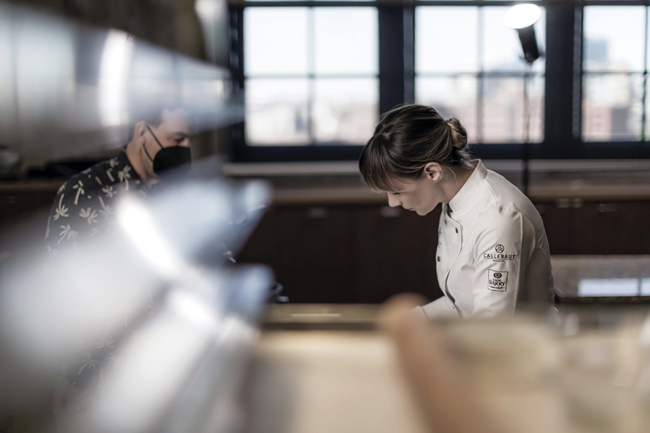
What can the sector do, from the pastry chef to the supplier of products and raw materials, including schools, to contribute to sustainability?
In general, across the sector there is opportunity to work towards a more sustainable future. For example, chefs can work more closely with farmers to utilize and promote more sustainable agricultural varieties. An example of this is the work of Dr. Stephen Jones at Washington State University, who breeds wheat, barley and rye varieties that are better for the soil and farming, taste better, and are healthier than most varieties on the market. Dr. Jones works directly with artisan bakers to test and refine new grain varieties, ensuring that they are not only better for our planet, but also have superior taste and baking performance. There are similar collaborations taking place at research farms around the USA, and many more opportunities for chefs to collaborate with the agricultural sector in other regions. For example, chefs can collaborate with the cocoa sector to utilize products such as cocoa pulp and juice, which utilizes part of the cacao that would typically go to waste, providing income diversification for farmers.
Schools have a responsibility to infuse sustainability into their curriculums. Equipping the next generation of chefs with core sustainability competencies will have a long-lasting impact.
One of the biggest changes that we can make as chefs is to produce more plant-based desserts. Plant-based diets produce 49.6% fewer greenhouse gas emissions, utilize 26.9% less energy for food production, and have a 41.5% smaller environmental footprint compared to diets that included animals*. *French Environment and Energy Management Agency 2018 Report, Environmental Impacts of Plant-Based Diets.
The more that chefs request sustainable options such as compostable plastic film, the sooner economies of scale will make these items accessible at competitive prices.
What is the point of using local products if we promote global tourism? In other words, we refuse to buy products from other continents, but we need customers from all over the world to buy what we do in our restaurants and pastry shops. Isn’t that a contradiction?
The movement towards supporting local foods has numerous benefits, from raising the profile of indigenous agricultural products which supports biodiversity, to reducing carbon emissions. I do not believe that chefs have a responsibility to either promote or discourage global tourism, but rather to focus on the aspects within our control.
What have you prepared for so good.. magazine? How do you interpret sustainability in this creation?
For this issue, I have created a plant-based entremet without the use of plastic or silicone molds, featuring polycrop ingredients. The mold was hand fashioned out of paper. While at this time individual paper molds may not be practical, I can envision a world where we do not rely so heavily on plastics in pastry, and instead use renewable, recyclable materials. It’s time to move away from disposable plastics.
The entremet utilizes a unique polycrop flour from Ansel Mills in North Carolina, USA. Until relatively recently, polycropping was the dominant form of agriculture. For example, indigenous peoples in the United States would grow corn, beans, and squash together. The beans convert nitrogen from the air to nitrates, acting as a natural fertilizer, while the leaves of the squash provide ground cover. Polycropping has significant environmental benefits, most notably increasing biodiversity on multiple levels. This particular polycrop flour consists of landrace grains, legumes and oil seeds, planted in stages so that they would be ready for harvest at the same time. The flour has a complex flavor, with nutty and malty notes. For the mousse and coating, I used Cacao Barry Evocao™ WholeFruit chocolate, which is made only with cacao liquor and natural sugars extracted from the cacao pulp. The chocolate is the first Upcycled Certified chocolate available globally. For this dessert, I wanted to utilize the cacao more as a fresh fruit instead of dried beans, and also used cacao juice in my caramel. I selected bananas as the flavor pairing, as bananas are often intercropped with cacao, providing shade to cacao trees and also a secondary source of income for farmers. The general theme is creating pastry in harmony with itself and with nature.
And as a good example is worth a thousand words, Lauren gives us an exclusive plant-based entremet for so good.. magazine, without the use of plastic or silicone molds, and featuring polycrop ingredients. Its name –Harmony.
